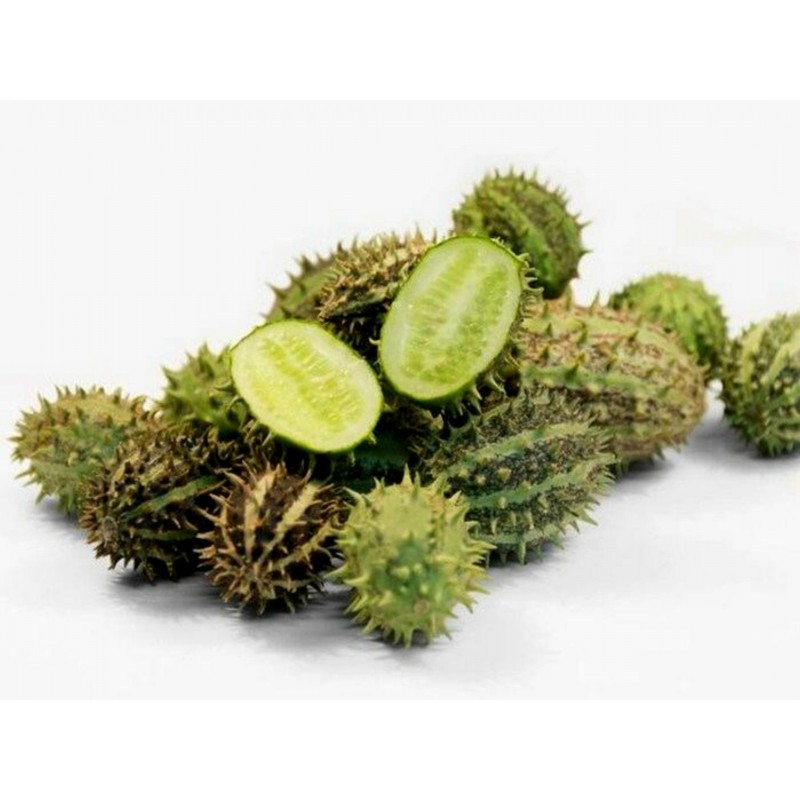





Ovaj krastavac je jos poznat I pod sledecim imenima: Bodljikavi Krastavac, Zele dinja, Kivano.
Ovaj krastavac je prvi put opisan I postao poznat siroj javnosti tek 2008. Godine, kao novo otkrivena vrsta se jos uvek jako tesko moze naci. Iako plodovi izgledaju tako da sluze samo kao ukras to nije tacno I cak sta vise svi koji su imali priliku da ga probaju su bili odusevljeni ukusom ovog krastavca…
Biljke puzu I u duzinu mogu otici od 2 do 4 metra.
Cucumis zambianus (Cucurbitaceae), a New Species from Northwestern Zambia.
Horned Cucumber, Jelly Melon, Kiwano) Annual vining vegetable native to NW Zambia where it is cultivated by indigenous farmers. The young fruits are mottled green and are wholly edible, tasting like cucumber. The mature fruits are hard of shell, green and yellow striped, a scoopable source of nutritious seeds and life-giving water. Speaking to the "water" aspect of this, there are several advantages to considering "growing your own drinking water" in this manner. I often get thirsty in the garden, and find that eating a cucumber assuages thirst and keeps me going. The African cucumber is particularly nice for this, as the inside stays watery and pleasant tasting regardless of stage of ripeness (outer shell does not get rubbery). When I "drink" the insides of the horned cucumber, and chew up the seeds, my body feels just as balanced as if I'd drunk a can of raw coconut water, and my pocketbook says thank you, and the earth says thank you for not using an aluminum can! Having trouble finding clean drinking water? Cycle the water source through the plants in your garden, and they will clean it up, and fix pure water in their tissues for you to use. This may sound farfetched, but in areas where amoebic dysentary is prevalent, it can be lifesaving to peel and eat your water instead of drinking it from a glass! These kinds of precautions are relevant in certain parts of the world, and may well become more relevant into the foggy future. Lets be prepared! Cultivation: Standard garden culture for cucumbers. Start indoors just prior to last frost or direct seed. We started our's on May 17 in the greenhouse. Germination was efficient and rapid. We transplanted to the garden to 2 foot centers on June 1 and were eating cucumbers by July 1st. These were way faster to mature than "marketmore." The mature vines lasted throughout the summer and proved to be an effective weed barrier--they suppress the weeds between the beds.
Cucumis zambianus is a relatively new species, first officially described in 2008.

 Reviews (0)
Reviews (0)